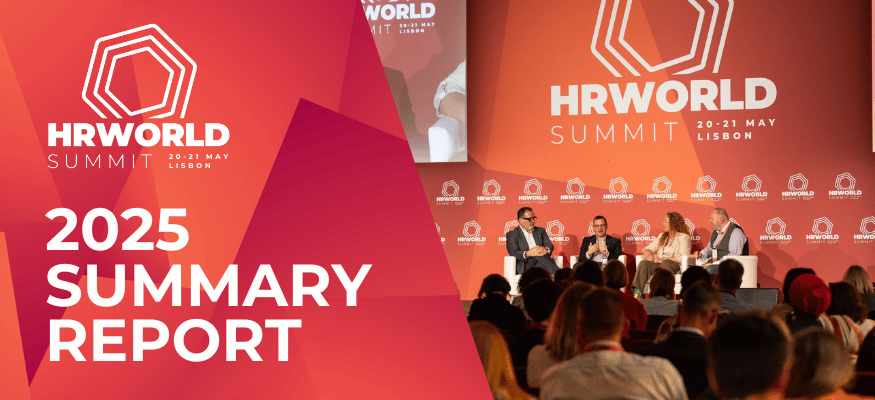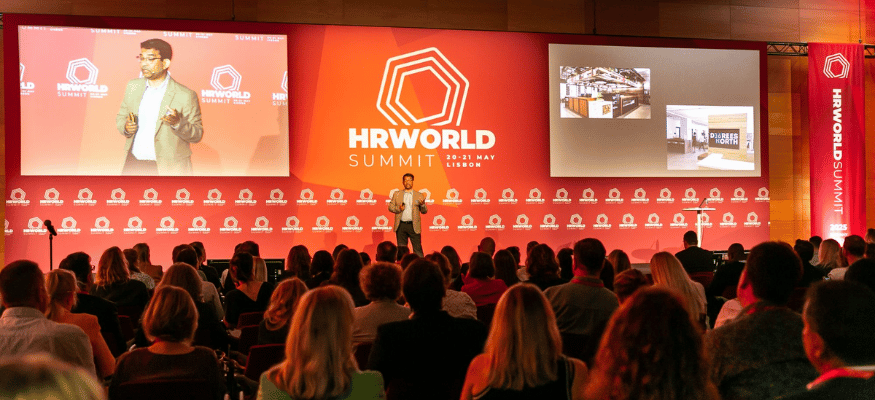The People and Organization Function – commonly called HR by most people outside of HR – has profoundly evolved from an administrative, back-office function to a core strategic driver of business success. What separates good HR from great HR today is the ability to lead strategically and leverage technology while keeping a human-centric focus. This article aims to explore that journey – the shift from operational to strategic HR leadership, the transformative role of technology, and key insights from renowned thought leaders such as Wharton professor Peter Cappelli, Michigan professor Dave Ulrich, London Business School professor Lynda Gratton, INSEAD professor Mark Mortensen, and Harvard professor Amy Edmondson on achieving People and Organization excellence. We also connect these theories to the themes of the upcoming HR World Summit, “Elevate, Evolve, Engage: Shaping the Future of Work,” where the profession’s future takes centre stage.
From Personnel Administration to Strategic HR Leadership
HR’s early role – In past decades, HR (then often called “personnel management”) was primarily transactional: managing payroll, enforcing policies, and handling hiring and benefits. Yet even in the mid-20th century, HR held surprising clout in some companies. As Wharton’s Peter Cappelli notes, surveys in the 1950s showed HR was viewed as “the most glamorous sector” – HR leaders at firms like IBM and GE “decided everything,” from promotions to career paths. Over time, however, the function’s prestige faded as organisations shifted focus to finance, operations, and technology, sometimes sidelining HR in significant decisions. In economic downturns especially, HR was seen as a dispensable bureaucracy (the “nagging” policy enforcers), only to be valued again in talent crunches when “HR becomes very important” in retaining scarce talent.
The rise of strategic HR – By the 1990s and 2000s, leading thinkers began redefining HR’s purpose. Dave Ulrich, for example, introduced a four-role model (administrative expert, employee champion, change agent, and strategic partner) that elevated HR’s mandate beyond administration to driving strategy execution. Ulrich argues that HR must create real business value: “HR is not about HR – it’s about what value we create from doing HR” for employees, customers, and the community. In practice, this means HR isn’t merely an internal staff function but a co-architect of strategy and organisational capability. Ulrich’s “outside-in” philosophy urges HR to align its initiatives with external stakeholders – investors, customers, and society – not just internal workforce needs. Great HR leaders partner with CEOs to shape business direction, organisational design, and culture. Instead of waiting to implement strategy, HR is called to co-create it. This evolution from operational support to strategic leadership is evident in modern CHRO job descriptions emphasising organisational agility, talent pipelines, and cultural transformation.
Culture and leadership as HR’s domain – As HR gained a seat at the table, its scope expanded to shaping culture and leadership development. Questions raised at executive summits reflect this broader role: How does HR mould company culture? How do we develop leaders and successors? Harvard professor Amy Edmondson points out that HR leaders today are architects of a learning culture. They bear “responsibility for creating organisations that promote failure rather than punish it,” cultivating an environment where smart risks and experimentation fuel innovation. In other words, an operational HR might focus on enforcing rules, but a strategic HR builds a culture of growth – where managers are trained to be effective people leaders, employees feel safe to speak up, and “failure” is reframed as learning on the path to success. This culture mandate solidifies HR’s standing as a crucial strategic function shaping the organisation’s future readiness and resilience.
Technology’s Transformative Role in Modern HR
From HRIS to AI – Technology has revolutionised HR from the days of filing cabinets to today’s AI-driven talent analytics. Great HR functions distinguish themselves by integrating technology into their strategy instead of treating it as a back-end tool. Key priorities like “advancing AI-enabled evolution in HR and [using] people analytics as a strategic compass” reflect the growing influence of technology in shaping the modern HR agenda (The Future of Work 10 HR Predictions for a Flourishing Workforce in 2025 Report). Automation and cloud HRIS systems have freed HR from clerical drudgery, allowing more focus on strategy. Data analytics and artificial intelligence are the new frontier enabling HR to predict workforce trends, personalise employee experiences, and make evidence-based decisions.
Data-driven HR decision-making – Professor Peter Cappelli urges HR leaders to “get in front of the data engine” – to move from intuition and tradition to analytics-powered decision-making. He observes that in top firms, there’s often “a substantial gap” between HR and hot fields like big data and machine learning, with HR and technical teams “talking completely past each other”. Great HR bridges this gap. Cappelli suggests partnering with data experts or hiring HR data analysts so that HR can leverage insights from statistics and machine learning for talent strategy.
By grounding workforce decisions in data (e.g. using predictive analytics to identify flight risks or evaluate the real drivers of performance), HR moves from a reactive service department to a proactive strategic player. “We know that you shouldn’t just manage from your gut,” Cappelli quips, encouraging HR to use new data tools as the foundation for important decisions. Embracing HR technology isn’t just about efficiency but elevating HR’s credibility and impact through evidence-based practice.
AI, digital tools and the human touch – London Business School’s Lynda Gratton highlights that technology and social changes are reshaping work, and HR must respond by redesigning work for the future. She notes that despite the possible digital connectivity, many companies’ work structures remain stuck in the past. Gratton advocates applying design thinking to boldly reimagine how we organise jobs, teams, and workplaces. This might mean questioning the necessity of legacy practices (e.g. 9-5 office presence) and instead leveraging technology to enable flexibility and better work-life integration. “As new trends and technologies emerge, companies must see these evolutions as chances to reimagine how their businesses are structured,” Gratton says – with nothing “off the table” when envisioning more efficient, human-centric ways of working.
For example, modern HR leaders use collaborative platforms and talent marketplaces to break down silos or experiment with AI tools in recruiting while ensuring a human lens (to avoid bias). The goal is to balance tech-driven efficiency with human values (The Future of Work 10 HR Predictions for a Flourishing Workforce in 2025 Report). Indeed, the latest HR innovations emphasise augmentation over replacement – using AI to enhance decision quality and employee experience, while HR champions empathy, creativity, and purpose. As a 2025 HR outlook report concludes, CHROs must lead with purpose, leveraging technology to enhance (not replace) human connections, effectively becoming orchestrators of both organisational and technological resilience. Great HR organisations thus treat technology as an enabler to amplify human potential: from AI-assisted learning platforms to data-informed diversity efforts, tech is interwoven with a strategy to drive better outcomes for people and businesses.
From Good to Great HR: Thought Leaders’ Insights
What differentiates good HR from great HR? These thought leaders each provide a lens on the practices and mindsets that elevate HR to the next level of impact:
Peter Cappelli: Marrying Business Insight with Evidence-Based HR
Cappelli argues that great HR leaders speak the language of business and back it up with data. A merely “good” HR department might excel at traditional roles like compliance and basic hiring, but great HR positions itself as a business-critical function. Cappelli believes this requires closing the knowledge gap between HR and analytics/technology. He notes bluntly that “HR people know nothing about computer science, and the computer science people know nothing about HR” in many firms – a disconnect that great HR teams must overcome. HR can inform decisions with rigorous evidence rather than anecdotes by developing analytical capabilities (either through upskilling or partnering with data scientists). For instance, instead of relying on gut feeling for talent management, a great HR team uses people analytics to identify what drives retention or performance. Cappelli emphasises that HR should use these data-driven insights to proactively influence business strategy, not just react. His advice to HR executives: find your “data person” and leverage tools like machine learning judiciously, so HR recommendations carry weight in boardroom discussions. In sum, Cappelli’s work suggests good HR manages the people processes. However, great HR also masters the science of people at work, earning a voice in strategic decisions through its analytical acumen and business-savvy perspective.
Dave Ulrich: Creating Value and Aligning to Strategy
Dave Ulrich’s contributions have fundamentally reframed HR’s mission. For Ulrich, the litmus test of great HR is value creation. A good HR department might focus on its own efficiency or culture and employees in isolation, but a great HR department is obsessed with delivering results that matter to external and internal stakeholders and the business’s bottom line. “HR is not about HR; it’s about what value we create from doing HR”, Ulrich insists – whether that value accrues to employees, customers, or investors. This outward-facing focus (“outside-in HR”) means great HR professionals start with the question: How will this HR initiative (be it a new performance management system or a training program) translate into tangible outcomes like customer satisfaction, innovation, or financial performance? Ulrich also highlights the shift from supporting strategy to shaping strategy. Rather than waiting for the CEO to set the plan and align HR accordingly, great HR leaders are co-creators of strategy.
They use their unique vantage point on talent and culture to suggest strategic pivots (e.g. entering a new market might only be feasible if the organisation can rapidly build specific skills or hire in new regions – insight the HR leader provides at the strategy table). Ulrich’s work on organisational capability further differentiates good vs. great: good HR might focus on individual talent development, but great HR looks at the broader organisational system – designing agile structures, fostering teamwork, and building leadership depth. “Creating the right organisation first and then the talent” can quadruple the impact on business results, Ulrich notes, because an effective team and system amplify individual performance. Ultimately, Ulrich sees great HR as a competitive advantage for companies: when HR ensures the organisation’s culture, leadership, and capabilities are aligned with strategy and adaptable to change, the business can thrive in a way competitors cannot easily replicate.
Lynda Gratton: Future-Focus, Flexibility, and Human-Centric Innovation
Lynda Gratton’s insight is that great HR is distinguished by how forward-looking and adaptive it is in the face of a changing world of work. A good HR team may excel at today’s operations, but a great HR team anticipates tomorrow’s challenges. Gratton’s research on the future of work highlights trends like technological connectivity, demographic shifts, and changing employee expectations – and she urges HR Leaders to proactively redesign work around these forces. For example, rather than clinging to rigid job descriptions and 20th-century office norms, great HR leaders experiment with flexible role design, hybrid working models, and continuous reskilling initiatives. Gratton advocates using design thinking in HR: deeply understanding employee and business needs, boldly reimagining work arrangements, testing pilot solutions, and then scaling what works.
This creative approach helps organisations move from “what has always been” to “what could be.” According to Gratton, one distinctive marker of great HR is the ability to craft a compelling “employee deal” or signature experience that sets the company apart. She suggests being explicit and intentional about your work culture so that it attracts the right talent: “If your company requires five days a week in the office… then that’s the deal” – and conversely, if you offer flexible or purpose-driven work, make that clear. By engineering a work environment that aligns with the values of your ideal employees, HR can boost engagement and performance. Gratton also notes that embracing new technology is part of evolving HR – not as a threat, but as an opportunity. Great HR sees advancements like AI or collaboration tools as chances to “reimagine… work structures to create new, efficient methods that better reflect reality” rather than something to resist. In essence, good HR manages the status quo; great HR continuously evolves the organisation, blending tech innovation with human-centric practices to ensure the company copes with change and harnesses it for competitive advantage.
Mark Mortensen: Enabling Collaboration and Team Effectiveness in a Hybrid World
INSEAD professor Mark Mortensen, an expert on team dynamics, provides a clear view of how great HR optimises how people work together, especially as work becomes more distributed and hybrid. Many HR departments have traditionally focused on individual roles and performance, but Mortensen’s work (including research with Martine Haas on “4-D teams” and the secrets of great teamwork) shows that excellent HR prioritises team and network performance. In modern organisations, value is often created by diverse, dispersed, digital, and dynamic teams, which presents new challenges beyond the capabilities of a “good” HR approach. Mortensen finds that successful teams need a few enabling conditions: a compelling direction, a strong structure, a supportive context (resources and rewards), and a shared mindset that unites team members.
Great HR practitioners distinguish themselves by facilitating these conditions. For instance, HR can ensure teams have clarity of purpose and goals (direction), deliberately design team roles and norms (structure), provide collaboration tools and recognition systems (supportive context), and build a culture of trust and inclusivity (shared mindset). In the era of hybrid work, Mortensen stresses tackling issues like proximity bias – where in-office employees might get unfair advantages over remote colleagues. A good HR might establish a hybrid work policy, but a great HR actively works to “ensure equal opportunities amongst hybrid teams” by training managers on inclusive practices and using technology to level the playing field. Mortensen also echoes Edmondson’s theme of psychological safety within teams: in hybrid settings, leaders must be even more intentional in creating an environment where dispersed team members feel safe to speak up and contribute without fear. By following guidance from research (for example, structuring check-ins and encouraging vocal participation from all team members), HR can help build the trust and open communication that great teams require. In summary, while good HR manages individuals, great HR engineers high-performing teams and collaboration – foster the conditions where teamwork thrives, whether people are in the same office or spread across time zones.
Amy Edmondson: Building a Fearless Culture of Learning and Innovation
According to Amy Edmondson, a hallmark of great HR (and leadership more broadly) is cultivating a culture of psychological safety – one where employees at all levels feel safe to voice ideas, admit mistakes, and learn. Good HR might enforce compliance and minimise errors, but great HR recognises that sustained innovation and agility come from an environment where people can take interpersonal risks without punishment. Edmondson’s research shows that teams with high psychological safety are more effective and learn faster because people aren’t afraid to share suggestions or flag problems. For HR, this means pushing beyond essential engagement initiatives to embed trust and openness into the company’s DNA.
Edmondson famously described the ideal as a “fearless organisation” where failure is not stigmatised but treated as valuable information for improvement. She notes that companies like Amazon openly tout being “the best place in the world to fail” as a driver of innovation. In practice, HR can promote this ethos by training leaders to role-model vulnerability (e.g. admitting their own mistakes), rewarding learning behaviour, and removing punitive responses to well-intentioned failures. Edmondson argues that HR should help organisations “promote failure rather than punish it” – not because failure is the goal, but because a willingness to experiment and sometimes fail is essential in a fast-changing environment. This “healthy failure culture” keeps companies adaptable and innovative, preventing obsolescence.
Additionally, Edmondson’s recent work (including with Mark Mortensen) highlights that psychological safety is even more crucial in uncertain times or hybrid workplaces, where informal cues are fewer. Leaders and HR must clarify the rationale for speaking up, invite participation, and recognise contributions to ensure employees everywhere feel their voice is valued. Great HR departments implement such practices organisation-wide, weaving psychological safety into performance management, training, and values. The payoff is a high-engagement, high-learning organisation that can quickly pivot and continuously improve. In Edmondson’s terms, good HR might manage human resources, but great HR unlocks human potential by cultivating a fearless, learning-oriented culture.
Aligning with “Elevate, Evolve, Engage” – The HR World Summit Themes
The insights from these thought leaders closely mirror the key themes of the HR World Summit 2025 – Elevate, Evolve, Engage: Shaping the Future of Work. This theme is a roadmap for HR excellence, encapsulating the very shifts and priorities discussed above:
- Elevate – HR must elevate its role from operational support to strategic leadership. This is precisely the evolution Dave Ulrich and Peter Cappelli emphasise. Ulrich’s call for HR to be a co-creator of strategy and a deliverer of business value aligns with elevating HR to the C-suite level of influence. Cappelli’s push for data-driven, business-aligned HR raises HR’s stature in company decision-making. The Summit’s agenda on “HR strategies and trends” and leadership reflects this focus on elevating HR impact.
- Evolve – The need to evolve with technological and societal change is a central theme for the Summit and our thought leaders. Lynda Gratton’s future-of-work vision and Cappelli’s tech-driven HR insights speak to evolving practices and mindsets. HR can no longer rely on old formulas; it must embrace the “technology advantage” – from AI to people analytics – which the Summit spotlights as a key discussion area. Gratton’s advice to use new tech and trends as an opportunity to reinvent work ties directly to “reimagining organisations to fit the future,” another Summit program pillar. Mark Mortensen’s guidance on adapting to hybrid work models is yet another example of HR evolving to new realities. In short, great HR continuously evolves, leveraging technology and innovation to stay ahead – precisely what the “Evolve” theme encapsulates.
- Engage – Perhaps most importantly, great HR is about engaging humans – building culture, purpose, and capability. The Summit highlights “purpose-driven workplace cultures and enhancing human capabilities”, resonating with Amy Edmondson’s focus on psychological safety and learning culture. When Edmondson and others talk about empowering employees to speak up and fostering trust, they provide the blueprint for deeper engagement and inclusion. Mortensen’s emphasis on team collaboration and equal opportunity in hybrid teams also ties in with meaningfully engaging every employee, regardless of location. “Engage” is about HR cultivating an environment where employees are committed and can do their best work – a theme that runs through all these experts’ advice, from encouraging experimentation to aligning work with people’s values. It’s also directly linked to the Summit’s focus on organisational culture and leadership since engaging people requires both a supportive culture and leaders who exemplify it.
In conclusion, the difference between a good HR organisation and a truly great one lies in this strategic and integrated approach. Great HR leaders elevate the function beyond its traditional boundaries, evolve continuously by integrating technology and forward-thinking practices, and engage the workforce at a profound level. They heed Cappelli’s call to be evidence-based and tech-savvy, Ulrich’s mandate to create stakeholder value, Gratton’s vision to redesign work for the future, Mortensen’s strategies for collaborative teams, and Edmondson’s insistence on a fearless, learning culture. These elements of strategic HR excellence are exactly what global forums like the HR World Summit are now championing. With HR’s role expanding into “shaping a future where work isn’t just a task but a meaningful journey”, the journey from good to great HR is not just aspirational – it’s become an urgent business imperative for those looking to thrive in the future of work.
—————————————–
HR WORLD SUMMIT – 20/21 MAY | LISBON. “Elevate, Evolve, Engage: Shaping the Future of Work,
—————————————–
Sources:
- Cappelli, P. – Knowledge@Wharton on HR’s need to reclaim strategic influence and bridge the HR-tech gap (Has Human Resources Lost Its Edge in a Tech-driven World? – Knowledge at Wharton)
- Ulrich, D. – University of Houston talk on creating value through HR (outside-in approach, agility, co-creating strategy) (Dave Ulrich: How to create value through HR – University of Houston)
- Ulrich, D. – Quoted tweet emphasising HR’s purpose is value creation for employees, customers, and communities (HR is not about HR – The HR Business Partner Story).
- Gratton, L. – Redesigning Work insights via Gloat interview (design thinking in HR, embracing new technology and paradigms) (Lynda Gratton on HR’s role in the future of work | Gloat)
- Mortensen, M. & Haas, M. – HBR research on effective teams (enabling conditions: direction, structure, support, shared mindset)
- Mortensen, M. – myHRfuture podcast on hybrid teams (ensuring equal opportunities, mitigating proximity bias, fostering collaboration and safety) (How to Foster Collaboration Within Hybrid Working Teams | myHRfuture)
- Edmondson, A. – HRD Connect podcast on “failure culture” and learning for innovation (HR’s role in enabling smart risk-taking) https://hbr.org/2023/07/its-ok-to-fail-but-you-have-to-do-it-right
- Edmondson, A. & Mortensen, M. – Guidance on psychological safety as crucial for high-performing teams, especially in uncertainty (Effective Strategies for Building and Boosting Psychological Safety | INSEAD Knowledge)
- The Future of Work: 10 HR Predictions for 2025 – HR World Media report (emphasising AI in HR, people analytics, and balancing tech with human values) (The Future of Work 10 HR Predictions for a FLOURISHING Workforce in 2025 Report
- HR World Summit 2025 – Event theme and program highlights (“Elevate, Evolve, Engage,” focus on strategy, technology, culture, leadership) (HR World Summit 2025,









